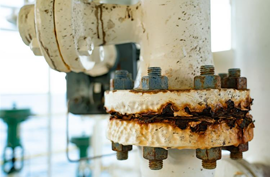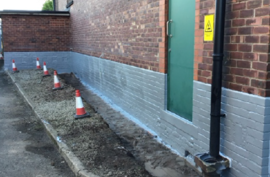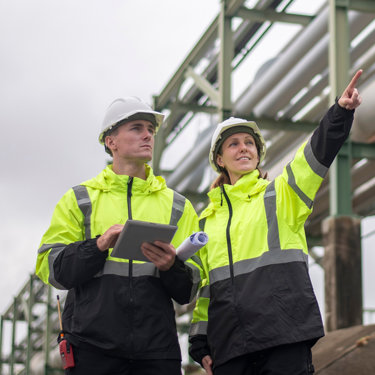Proactive syphon maintenance improves sewer capacity by 50%
Published: 31 March 2022
Our client had already established a strong track record on pollution prevention. As the only UK water provider with a regular syphon cleaning plan, they recognised the pivotal link between critical asset maintenance and water quality, customer confidence, and environmental compliance.
The industry leader partnered with us to implement an estate-wide programme of syphon cleaning, monitoring, and maintenance to stay a step ahead of network performance issues – and avoid the catastrophic costs of a worst-case scenario.
The challenge
Syphons are make-or-break elements of a water company’s infrastructure. Usually running under rivers, railways, and roads, they present complex access and servicing challenges.
Blockages can restrict a pipe’s hydraulic capacity, reducing throughput and placing additional pressure on combined sewage overflows (CSOs).
Ultimately, syphon failure can cause extensive environmental and reputational damage, so investing in routine clearance can prevent massive expenditure down the line from containing large-scale sewage releases.
Investigation and assessment
Even as part of a rolling maintenance programme, every project begins with a comprehensive asset inspection to evaluate syphon condition, access points, and potential risks.
Depending on site structure and pipe depth, specialist crews – trained in supervising and carrying out high-risk, confined space entry operations – then determine the ideal isolation, drainage, and cleaning techniques for the job.
- Pipes are isolated using bungs, gate valves or similar methods. Where non-isolated pipes can’t cope with increased flow, over-pumping methods may be used to reroute excess water around the river or canal during the cleaning process.
- Qualified professionals manage the isolation process, dealing with access chamber issues, such as corrosion on hatch boxes.
- Once pipes are safely drained, confined space specialists gain entry via access areas on the lowest point of the siphon. CCTV provides clear sight of current blockages caused by grease or debris, while highlighting structural issues that could cause subsequent issues.
Remediation
To deliver maximum productivity and clearance, we use an effective combination of leading-edge recyclers and deep suction vehicles from our nationwide fleet. Large-scale blockages are treated with our efficient recyclers, which re-use the water for jet cleaning.
Tailored cleaning programmes for every site continue to extend capacity and minimise pollution risks across our client’s entire estate.
Through routine, fixed-cost syphon cleaning and maintenance, our customer is investing in the future of their network – and preventing the far reaching costs of critical asset failure.
- Deep suction tankers and recyclers clear debris and grease, delivering a complete high-pressure clean.
- Cracks and structural defects are repaired while the pipe is drained, adding to asset life.
- Continuous CCTV monitoring tracks progress during the clean.
- Experienced project managers ensure the project remains on schedule and budget at every stage.
Our solution
Our targeted syphon maintenance programme delivers repairs, monitoring and cleaning at any interval (12 months to 10 years), depending on site history and current conditions.
In addition to draining pipes and clearing debris to maximise flow capacity, our expert engineers pinpoint emerging network vulnerabilities – from cracks, observations, and structural problems to potential sewage leaks and pollution hazards.
Recent benefits include:
- Proactive pipe lining restoration, conducted during routine cleaning operation, added 20 years to the asset’s life.
- Maintenance work prevented the failure of three under-river syphons, saving an estimated £10+ million in replacement costs, associated pollution fines, and operational downtime for each.
- Clearing natural debris increased sewer capacity by 50%. Removing the build-up avoided the precarious alternative of running the system on one pipe, taxing the rest of the network and risking a pollution event.
The outcome
- £0m+£9.87 million in potential savings from scheduled preventive maintenance.
- 0yrs20 years added to pipework life following lining repairs.
- 0%50% improvement in sewer capacity.
- Reduced pressure on CSOs
- Optimum network flow and asset performance
- Fixed costs and simplified budgeting
- Early warning of structural issues and overflows
- Proactive risk monitoring and pollution prevention
- Consistent compliance with environmental legislation
More from our Knowledge Hub
 Insights
InsightsMitigating climate change risks through planned preventive maintenance
 Insights
InsightsProtective coatings: Safeguarding infrastructure against climate change
 Insights
InsightsDelivering the Water (Special Measures) Act: Supporting compliance and innovation
 Insights
InsightsA guide to navigating climate change regulations for UK businesses
Environmental compliance today, creating a sustainable tomorrow
Helping you reduce risk to the environment and your operation by managing assets compliantly while achieving commercial, ESG, and net-zero goals.
Contact our experts

